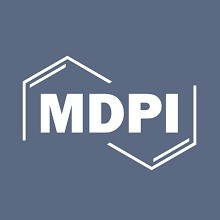
دانلود مقاله واکنش فیزیولوژیکی شدید به پروتکل های متفاوت تمرین دو سرعت
چکیده
1. مقدمه
2. مطالب و روش ها
2.1. رویه آزمایشی
2.2. پروتکل آموزشی
2.3. نمونه گیری خون
2.4. اندازه گیری عملکرد
2.5. تحلیل آماری
3. نتایج
4. بحث
4.1. حداکثر توان خروجی در طول تمرین اسپرینت در هیپوکسی و نورموکسی
4.2. پاسخ های فیزیولوژیکی به تمرینات سرعتی در هیپوکسی و نورموکسی
4.3. پاسخ های گاز خون به تمرین اسپرینت در هیپوکسی و نورموکسی
4.4. پاسخ ادراکی به تمرین اسپرینت در هیپوکسی و نورموکسی
4.5. محدودیت ها
4.6. دستورالعمل های آینده و کاربرد عملی
5. نتیجه گیری ها
منابع
Abstract
1. Introduction
2. Materials and Methods
2.1. Experimental Procedure
2.2. Training Protocol
2.3. Blood Sampling
2.4. Performance Measures
2.5. Statistical Analysis
3. Results
4. Discussion
4.1. Peak Power Output during Sprint Training in Hypoxia and Normoxia
4.2. Physiological Responses to Sprint Training in Hypoxia and Normoxia
4.3. Blood Gas Responses to Sprint Training in Hypoxia and Normoxia
4.4. Perceptual Response to Sprint Training in Hypoxia and Normoxia
4.5. Limitations
4.6. Future Directions and Practical Application
5. Conclusions
References
چکیده
مقدمه: هدف از این مطالعه بررسی پاسخهای فیزیولوژیکی حاد و اثرات عملکردی دو پروتکل تمرین سرعتی در شرایط هیپوکسی نرموباریک بود. روشها: قایقران زن سالم رقابتی (2 نفر) و مرد (5 نفر) قایقران (1/2 ± 19 سال) چهار جلسه تمرین سرعتی را روی یک ارگومتر کایاک در مدت دو هفته انجام دادند. شرکت کنندگان پنج ست از سرعت های 12 × 5 ثانیه یا سرعت های 3 × 20 ثانیه را در هر دو شرایط نرموباریک نورموکسیک (NOR، FiO2 = 20.9٪) یا هیپوکسیک نرموباریک (HYP، FiO2 = 13.6٪) انجام دادند. حداکثر توان خروجی (PPO)، میزان تلاش درک شده (RPE) و ضربان قلب (HR) هر شرکت کننده به طور مداوم کنترل شد. غلظت لاکتات خون آنها ([BLa+])، علاوه بر گاز خون (فشار جزئی وریدی مختلط (p) دی اکسید کربن (pCO2)، O2 (pO2)، و اشباع اکسیژن (sO2)) قبل و بعد از تمرین جمع آوری شد. . یافتهها: پاسخ RPE، HR و [BLa+] بهطور معنیداری بیشتر و کاهش معنیداری در pCO2، pO2 و sO2 در شرایط HYP نسبت به NOR، مستقل از نوع جلسه تمرین مشاهده شد. PPO شرکت کنندگان بین جلسات تفاوتی نداشت. RPE آنها در HYP12 × 5 در مقایسه با سایر جلسات بیشتر بود. نتیجه گیری: شرایط HYP باعث ایجاد فشار فیزیولوژیکی به طور قابل توجهی در مقایسه با شرایط NOR شد و این در هر دو جلسه تمرینی مشابه بود. نتایج ما نشان میدهد که هر یک از پروتکلهای تمرین سرعت در شرایط HYP ممکن است سازگاریهای تمرینی مثبتتری را در مقایسه با تمرین سرعت در شرایط NOR ایجاد کند.
توجه! این متن ترجمه ماشینی بوده و توسط مترجمین ای ترجمه، ترجمه نشده است.
Abstract
Background: the purpose of this study was to examine acute physiological responses to and the performance effects of two sprint training protocols in normobaric hypoxic conditions. Methods: Healthy competitive female (n = 2) and male (n = 5) kayakers (19 ± 2.1 years) performed four sprint training sessions on a kayak ergometer over a period of two weeks. Participants performed five sets of 12 × 5 s sprints or 3 × 20 s sprints in both normobaric normoxic (NOR, FiO2 = 20.9%) or normobaric hypoxic (HYP, FiO2 = 13.6%) conditions. The peak power output (PPO), rate of perceived exertion (RPE), and heart rate (HR) of each participant were monitored continuously. Their blood lactate concentrations ([BLa+ ]), in addition to their blood gas (mixed-venous partial pressure (p) of carbon dioxide (pCO2 ), O2 (pO2 ), and oxygen saturations (sO2 )) were collected before and after exercise. Results: A significantly greater RPE, HR, and [BLa+ ] response and a significant decrease in pCO2 , pO2 , and sO2 were observed in HYP conditions versus NOR ones, independent of the type of training session. The PPO of participants did not differ between sessions. Their RPE in HYP12 × 5 was greater compared to all other sessions. Conclusions: The HYP conditions elicited significantly greater physiological strain compared to NOR conditions and this was similar in both training sessions. Our results suggest that either sprint training protocol in HYP conditions may induce more positive training adaptations compared to sprint training in NOR conditions.
Introduction
Traditional “altitude training”, where athletes live and train at real or simulated altitudes of 1800–2400 m, has focused on enhancing sea level endurance performance by improving red cell mass [1]. Live high train low (LHTL) models are commonly used in preseason training to enhance aerobic and potentially anaerobic performance [2,3]. LHTL training approaches require athletes to adhere to prolonged and consistent exposure (≥3 weeks) to hypoxia, while training at sea level, in order to stimulate an increase in red blood cell (RBC) mass whilst reducing the potentially detrimental effects of continuous altitude exposure on detraining [4]. However, such training is neither time- nor cost-effective [5]. While the positive effects on aerobic capacity are well-documented, the reported effects on anaerobic performance have been equivocal.
Conclusions
The results of this study indicate that many of the acute responses seen were associated with the environmental conditions. Overall, the hypoxic conditions were physiologically more stressful than the normoxic conditions, irrespective of the training protocol, which is in keeping with our hypothesis. The significant changes observed in RPE, [BLa+], pCO2, pO2, and sO2, as well as the non-significant but potentially meaningful changes seen in pH and HCO3 −, indicate that the hypoxia sessions were more physiologically stressful for the athletes. It does not appear that the type of training influenced performance or physiological response, except in the case of [BLa+].
